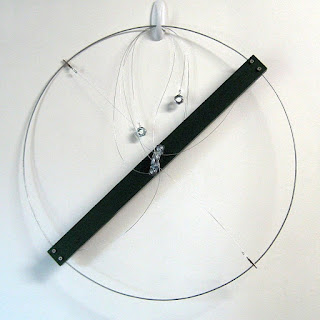The next generation of Magic Halo has arrived! The all new Sparrow-B-Gone! deploys an arm pattern instead of a hoop and is custom manufactured in Canada using UV-resistant plastics and recyclable materials. It uses clear nylon lines which are thicker, more reflective, and longer lasting than wood and steel wire. It is arguably more House Sparrow-resistant and goes further to reduce any possibility of tangling. Weights and lines can be removed and/or replaced, and both arms and lines can be readily adjusted to fit any size feeder. We are calling this a HUGE win for serious birders!
In terms of innovation, the company is just getting started. An enormous breakthrough is their universal roof mounting system that will easily adapt the product to bird feeders and boxes alike. Our customers made it clear that the arrival of a lines-type device to aid in bluebird husbandry, for example, was long overdue. Until now, hobbyists and conservationists could only rely on handmade contraptions or a version of "Sparrow Spooker" to help protect native cavity nesting birds. A new Sparrow-B-Gone product to protect bluebird houses (available soon) will abundantly fill that void and much more.
- Sparrow-B-Gone! products are based on the same research behind the Magic Halo products.
- Products are available to fit almost all standard backyard bird feeders, whether hanging or post/wall mounted.
- A new version for BirdBuddy(tm) smart camera feeders is now shipping and a version for Birdify camera feeders will be available shortly.
 They are made from premium materials, including UV resistant plastics that should hold up in Minneapolis in the winter or Phoenix in the summer. All metal parts are stainless steel.
They are made from premium materials, including UV resistant plastics that should hold up in Minneapolis in the winter or Phoenix in the summer. All metal parts are stainless steel.- All Sparrow-B-Gone! products are manufactured in Canada using advanced 3D printing systems and are assembled in the US.
- The products come with a one-year warranty and a 30-day return policy including free returns (US only).
- A new version of Sparrow-B-Gone! designed to protect most bluebird houses is in test and should be available in March or early April.
- The products are sold mostly through an Etsy store (sparrowbgone.etsy.com) although a few Wild Birds Unlimited stores do carry them.
Also check out their "BirdBuddy" camera and lines feeder system. Stay tuned for more! ~Francis











